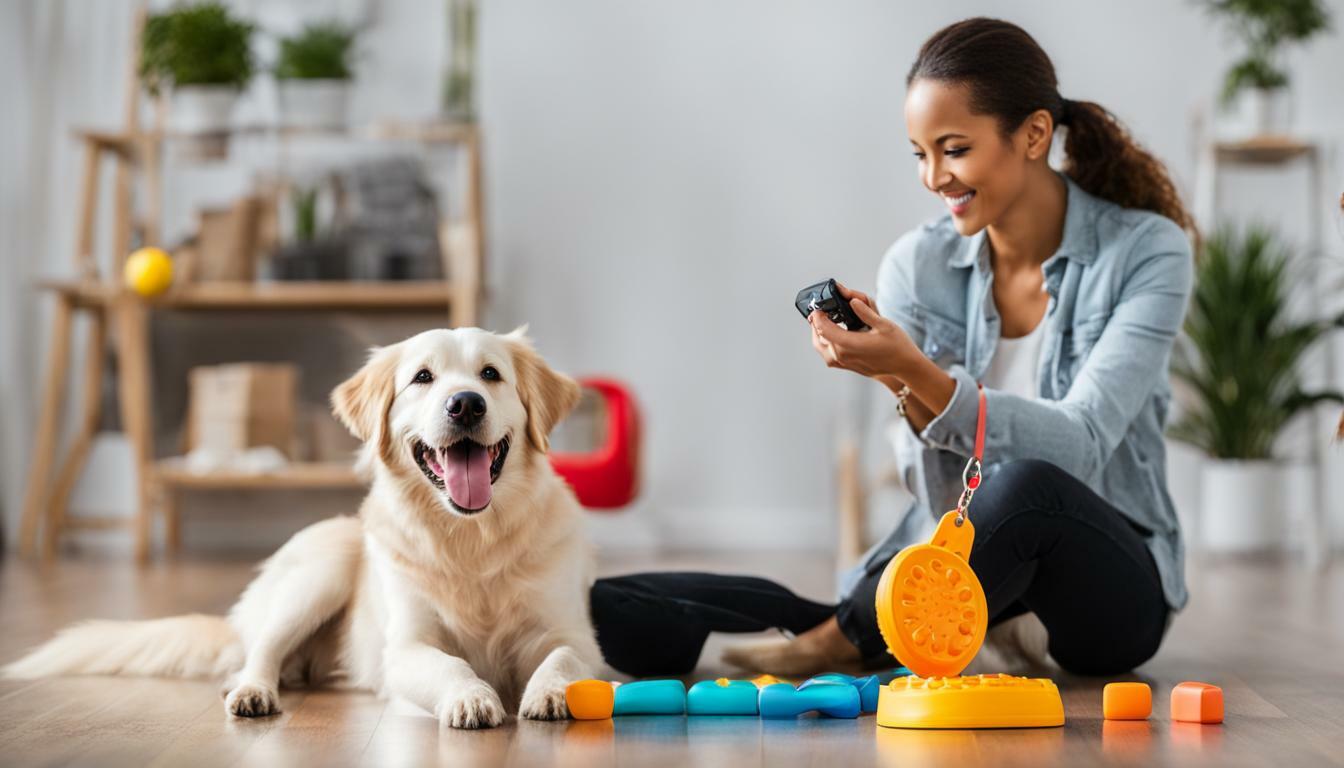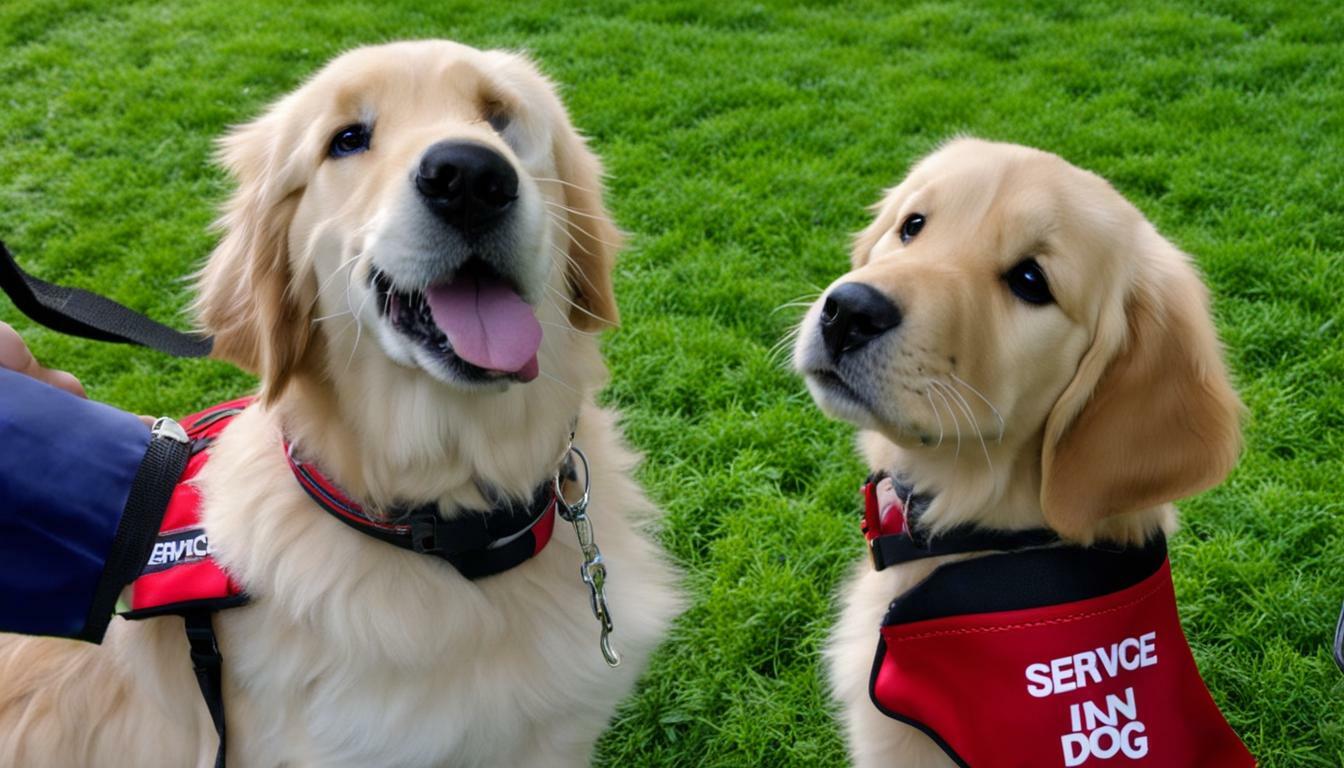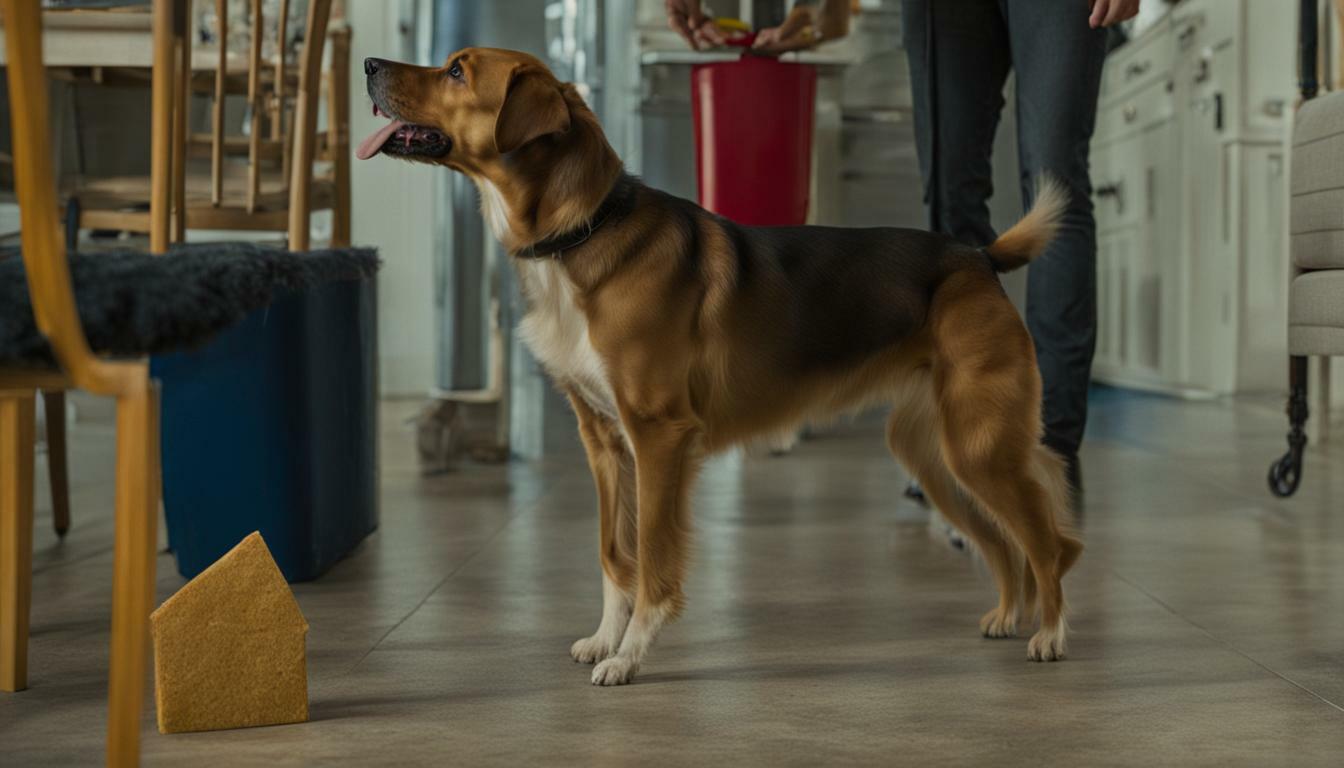As a dog owner, you might be wondering whether it’s too late to train your furry friend. Maybe you’ve adopted an older dog or have simply put off training, but the good news is that it’s never too late to start. With dog training tips and techniques, you can begin your dog’s obedience training journey today.
Dog obedience training is a valuable investment for the well-being of your dog and your relationship with them. Not only can it address behavior issues, but it can also create a stronger bond between you and your furry companion.
In this section, we will explore whether it is truly too late to train a dog and provide some dog training tips and techniques to help you get started with obedience training. We will discuss how age and stubbornness factor into training and also cover the importance of consistency in training. Additionally, we will explore various techniques such as positive reinforcement and clicker training, and provide effective solutions for common behavior issues.
- Dog training is possible at any age
- Consistency is key in dog obedience training
- Positive reinforcement and clicker training are effective techniques
- Address common behavior issues such as excessive barking and jumping
- Persistence and patience are crucial in the training journey
The Age Factor: Training an Older Dog
Many people believe that older dogs cannot be trained, but this is a common misconception. The truth is that dogs of all ages can learn new behaviors and modify their existing ones, provided they receive training that is suitable for their age and health condition.
When training an older dog, it is important to first establish trust and build a bond based on positive reinforcement. This means rewarding your dog for good behavior with treats, praise, and affection, rather than punishing them for bad behavior. Positive reinforcement can be especially effective for older dogs, as it can boost their confidence and motivation to learn.
One of the most important dog training techniques for older dogs is consistency. Older dogs may have established habits and routines, and it can take time and patience to modify their behavior. Consistent training sessions can help your dog to learn new behaviors more quickly and effectively, and can also help to reinforce good habits.
When training an older dog, it is also important to keep their health and physical limitations in mind. Some older dogs may have mobility or sensory issues that can affect their ability to learn new behaviors. It is important to work with your veterinarian and a professional dog trainer to design a training program that is safe and appropriate for your dog’s age and health condition.
Overall, training an older dog requires patience, persistence, and a willingness to adapt to their unique needs. With the right training techniques and a positive attitude, you can help your older dog to learn new behaviors and enjoy a happy, healthy, and fulfilling life.
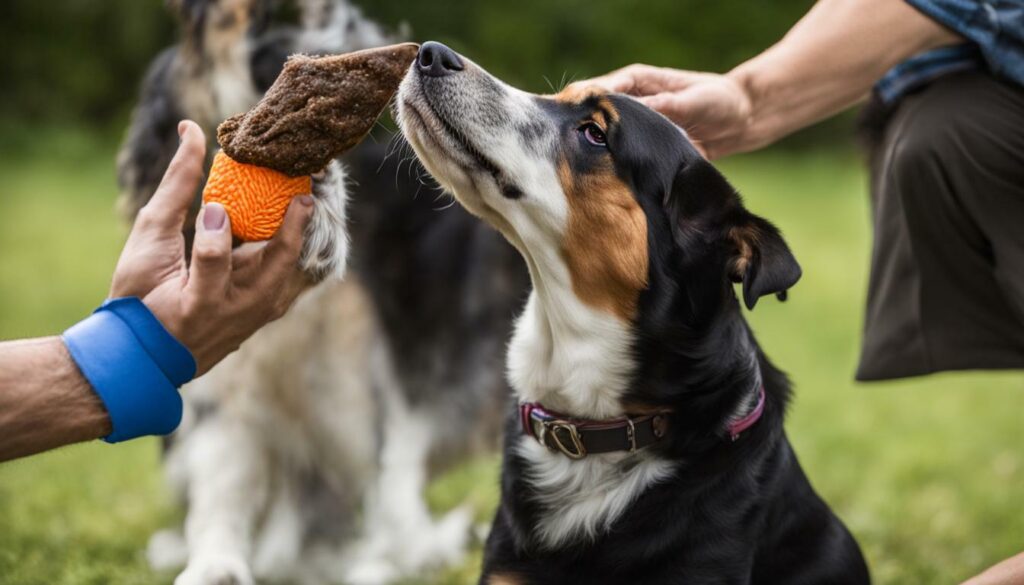
If you are the owner of a stubborn dog, you know how challenging it can be to train them. However, training a dog with stubborn behavior is not impossible.
The key to success is being patient and persistent, as stubborn dogs require extra time and effort to change their behavior. Moreover, consistency is crucial when it comes to training stubborn dogs.
One effective way to modify stubborn behavior is through dog behavior modification techniques. These techniques involve identifying the root cause of the dog’s behavior and then addressing it through positive reinforcement. Positive reinforcement involves rewarding your dog for good behavior to encourage them to continue that behavior.
It is essential to note that punishment is not an effective way to modify a dog’s behavior, especially for stubborn dogs. Punishment can cause stress and anxiety in dogs, leading to more behavioral issues.
If you are struggling with training a stubborn dog, consider enrolling in behavior modification classes with a professional dog trainer. They can help you identify the cause of your dog’s stubbornness and provide guidance on how to address it.
Training a stubborn dog requires time, patience, and effort. However, with the right techniques and consistency, you can modify their behavior effectively and help them become a well-behaved and obedient companion.
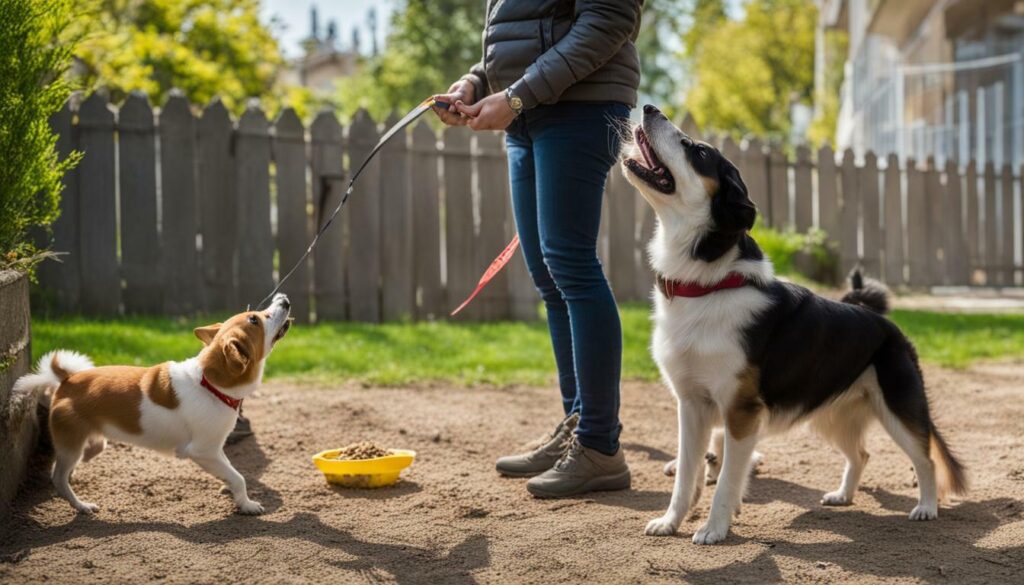
- Training a stubborn dog takes time, patience, and consistency.
- Dog behavior modification techniques are effective in addressing stubborn behavior.
- Avoid punishment as a way to modify a dog’s behavior.
- A professional dog trainer can provide guidance and support in addressing stubborn behavior.
The Importance of Consistency in Training
Consistency is the key to successful dog training. Dog training requires repetition, patience, and positive reinforcement. By maintaining a consistent training routine, you can ensure that your dog understands what is expected of them and reinforce good behavior.
When developing a training routine, start by establishing a regular schedule for feeding, exercise, and training sessions. This will help your dog adjust to a routine and understand when training time begins.
During training sessions, use consistent verbal cues and physical gestures. For example, if you want your dog to sit, use the same command and hand signal each time. This will help your dog associate the cue with the desired behavior.
Consistent rewards are also essential to reinforce good behavior. Provide praise and treats immediately after your dog performs the desired behavior, so they understand what they did correctly. Over time, your dog will learn that positive behavior leads to rewards.
Remember that dogs thrive on routine and consistency. By maintaining a consistent training routine and approach, you can improve your dog’s obedience and strengthen your bond.
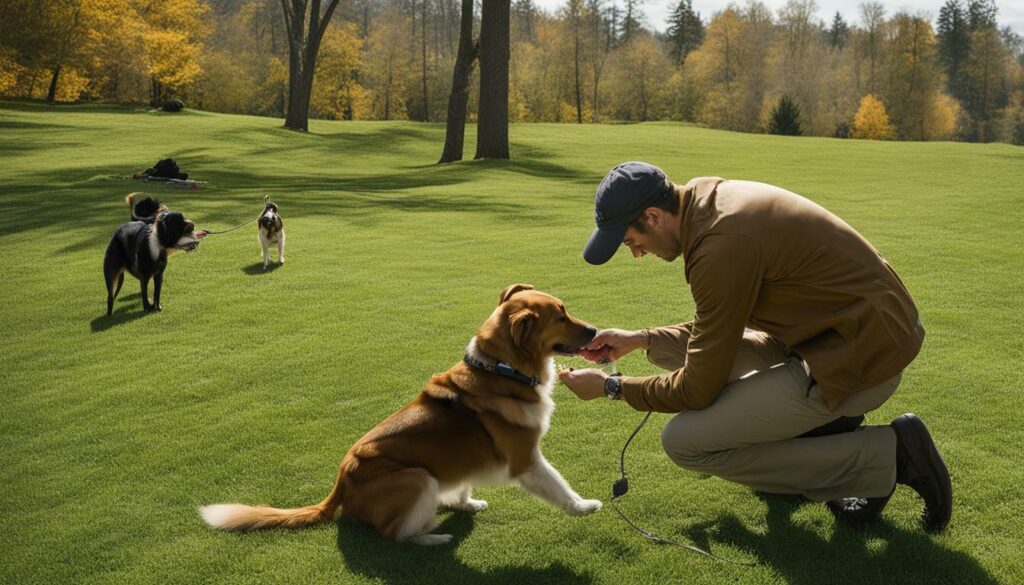
Incorporating positive reinforcement into your dog’s training is an effective and rewarding way to teach new behaviors. With this method, you reward your dog’s desirable behavior, making it more likely for them to repeat it in the future. This training technique can be used for dogs of any age, and is particularly useful for puppies who are just learning the ropes.
The key to positive reinforcement training is to use rewards that your dog finds motivating. This could be a treat, a toy, or even verbal praise and affection. By rewarding your dog immediately after they perform a desirable behavior, they will learn to associate that behavior with something positive. This conditioning creates a positive learning environment and encourages your dog to engage in good behavior more frequently.
To use positive reinforcement effectively, it’s important to be consistent in your training. This means rewarding your dog every time they perform the desired behavior, and avoiding rewarding unwanted behavior. Additionally, you can gradually increase the difficulty of the tasks you are asking your dog to perform as they become more proficient in their training.
It’s important to note that positive reinforcement training should never involve punishment or negative reinforcement. Yelling, hitting, or using shock collars can harm the relationship between you and your dog, and can lead to fear and anxiety. Instead, focus on positive reinforcement and using rewards to encourage your dog’s good behavior.
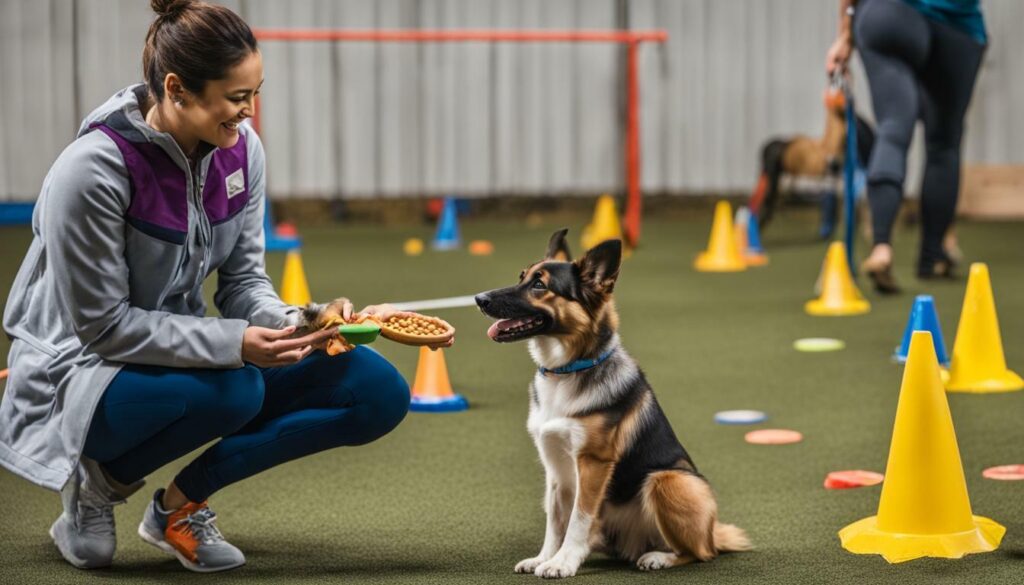
Positive reinforcement training has numerous benefits for both you and your dog. By using rewards, you can create a positive and enjoyable training experience for your dog, leading to a stronger bond and increased obedience. Additionally, this technique can improve your dog’s overall well-being by reducing stress and anxiety associated with punishment-based training methods.
Positive reinforcement training can also be used for a wide variety of behaviors, from teaching basic commands like “sit” and “stay” to more complex tasks like agility training. This versatility makes it an ideal training method for dogs of all ages and backgrounds.
Overall, positive reinforcement training is a powerful tool that can help you and your dog achieve your training goals. With consistency and patience, your dog will learn to associate good behavior with positive rewards, creating a strong foundation for a lifetime of obedience and companionship.
Clicker Training: Teaching Dogs with Precision
Clicker training is a popular and effective method of teaching dogs to perform specific behaviors. This technique uses sound reinforcement to mark desired behaviors and reward them immediately, creating a clear and precise communication between you and your dog.
When beginning clicker training, it is important to start with simple behaviors that your dog can easily learn. This can include commands such as “sit” or “stay.”
To start, you will need a clicker and some treats. Begin by clicking the clicker and immediately giving your dog a treat. Repeat this process several times, until your dog associates the sound of the clicker with receiving a reward.
Next, introduce a behavior that you want your dog to learn, such as “sit.” When your dog successfully performs the behavior, click the clicker and immediately give them a treat. Repeat this process until your dog consistently performs the behavior in response to the clicker.
Clicker training can be used for a wide range of behaviors, including obedience commands and tricks. It is a highly effective training technique, but it does require patience and consistency. With practice, you can use clicker training to teach your dog a wide range of behaviors.
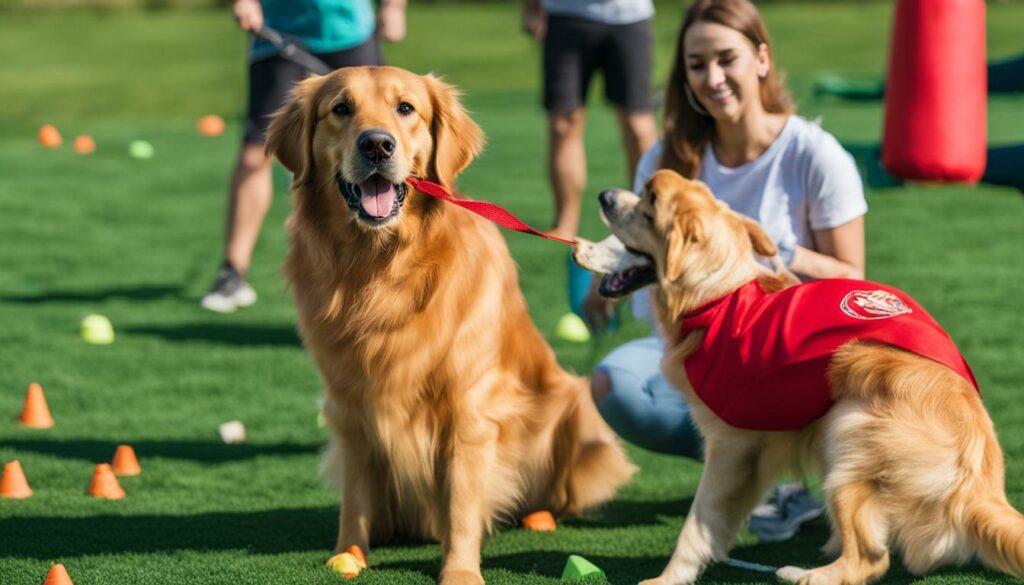
When using clicker training, it is important to keep the following tips in mind:
- Always use a consistent and clear clicker sound.
- Reinforce the behavior immediately with a treat.
- Be patient and consistent with your training.
- Keep training sessions short and focused.
By following these tips, you can use clicker training to teach your dog a range of behaviors and improve their obedience and responsiveness to your commands.
The Importance of Consistency in Training
Consistency is one of the most important elements of effective dog training. Dogs thrive on routine and repetition, and a consistent training regimen can help reinforce desirable behaviors and discourage unwanted ones. Here are some tips for incorporating consistency into your dog’s training routine:
- Establish a regular training schedule: Set aside specific times each day for training sessions. This will help your dog understand when it’s time to focus on training and when it’s time to relax and play.
- Use consistent commands: Use the same verbal cues and hand signals for each behavior you want to teach your dog. Consistency helps your dog learn the association between a particular command and the desired response.
- Be consistent with rewards: Use the same rewards every time your dog performs a desired behavior, such as a treat or verbal praise. This helps reinforce good behavior and lets your dog know what to expect for a job well done.
Consistent training helps build trust and respect between you and your dog, and establishes a foundation for a lifetime of good behavior. By incorporating these tips, you can create a consistent training routine that sets your dog up for success.

While training your dog at home can be rewarding, there are times when it may be necessary to enlist the help of a professional dog trainer. Professional trainers have the experience and knowledge to effectively address a wide range of behavior issues and accelerate your dog’s learning.
Professional dog trainers can offer a tailored approach to training, taking into account your dog’s specific needs and personality traits. They can also teach you how to communicate effectively with your dog and establish a strong bond based on trust and respect.
Dog training programs offered by these professionals can range from basic obedience training to addressing specific behavior issues such as aggression or anxiety. With their expertise, they can provide valuable guidance on which training techniques to use and how to use them properly.
Hiring a professional dog trainer may seem like an additional expense, but it can save you time and frustration in the long run. With their guidance and support, you can experience the joy of a well-trained, obedient dog.
| Benefits of Professional Dog Training |
|---|
| Customized training approach based on your dog’s needs and personality traits |
| Expert guidance on training techniques |
| Assistance in addressing specific behavior issues |
| Improved communication and trust between you and your dog |
| Time-saving and frustration-reducing |
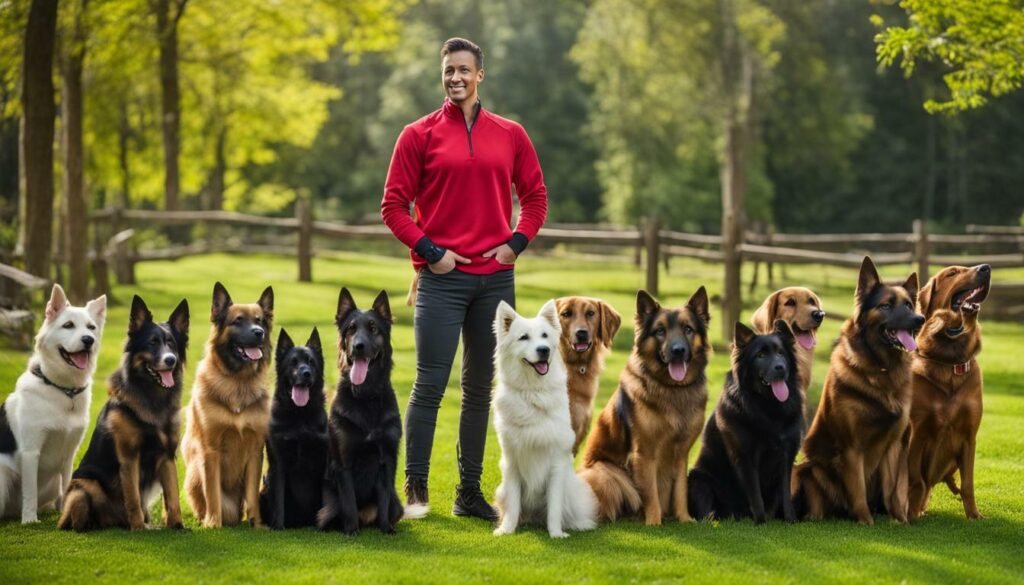
Consider researching available professionals in your area and their training programs to find the best fit for you and your dog. With the help of a professional trainer, you and your furry friend can flourish in a happy, well-trained, and obedient life together.
Socialization and Dog Training Classes
Socialization is an important aspect of training for dogs of all ages. It involves introducing your dog to different people, animals, environments, and experiences to help them become more confident and well-rounded. Socialization can also improve your dog’s behavior and reduce the likelihood of aggression or fear towards others.
Dog training classes are a great way to provide your dog with socialization opportunities while also learning new skills and behaviors. These classes are typically held in group settings and led by professional trainers who can provide guidance and feedback on your dog’s progress.
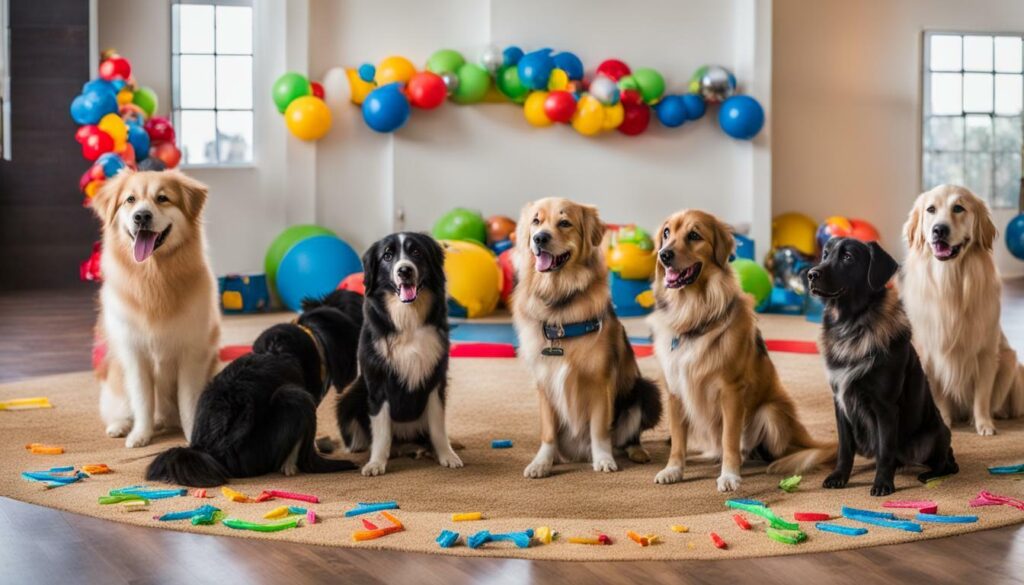
When selecting a dog training class, consider the specific needs and temperament of your dog. Look for classes that focus on positive reinforcement techniques and offer socialization activities such as playtime or group walks. It’s also important to choose a trainer who has experience working with your dog breed or age group.
During the class, be prepared to actively participate and work with your dog to reinforce desired behaviors. Remember to remain patient and consistent in your training, and always use positive reinforcement to reward good behavior.
Additionally, socialization does not stop after the training class ends. Continue to expose your dog to new experiences and environments, and encourage positive interactions with people and other animals.
Overall, participating in dog training classes can not only improve your dog’s behavior but also strengthen your bond with them. By incorporating socialization into your training regimen, you can help your dog become a happy, confident, and well-behaved companion.
Addressing Specific Behavior Issues
Training a dog can be challenging, especially when specific behavioral issues arise. However, with the right techniques and patience, these challenges can be overcome.
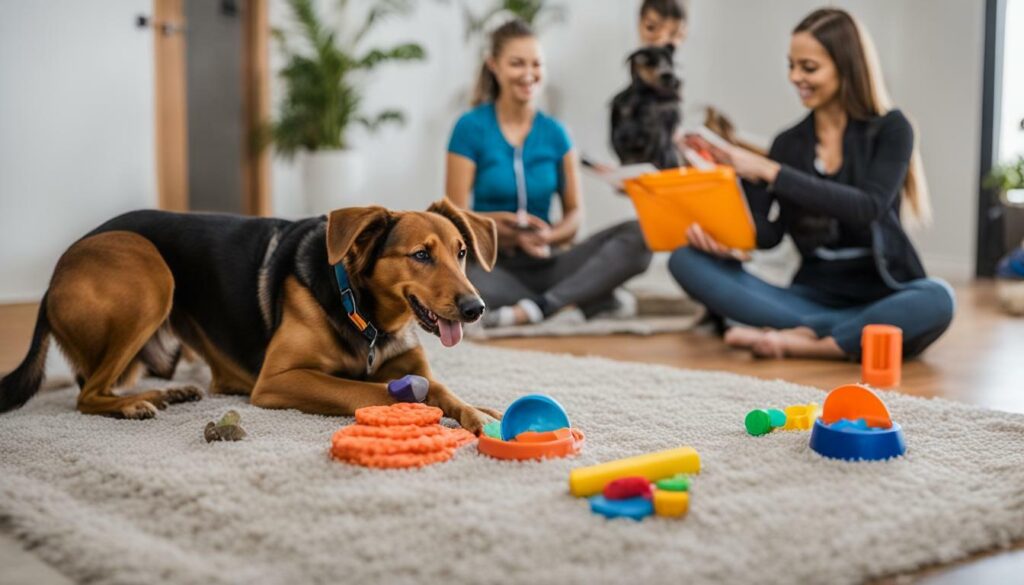
If your dog barks excessively, it can be a nuisance to you and your neighbors. To address this behavior, it’s important to understand why your dog may be barking. Reasons for excessive barking can include boredom, anxiety, or a lack of exercise.
One effective technique to reduce excessive barking is to ignore it. Giving your dog attention when they bark reinforces the behavior. Instead, try redirecting their attention to a toy or activity they enjoy.
Another technique is to train your dog to “speak” and “quiet” on command. By teaching them when it’s appropriate to bark and when to stop, you can control their behavior in different situations.
Jumping
Jumping is a common behavior issue that can be frustrating for owners and dangerous for guests. Dogs often jump to greet people and show excitement.
To address jumping, it’s important to teach your dog an alternative behavior, like sitting or staying, when greeting people. You can also train your dog to greet people with all four paws on the ground by rewarding them when they exhibit this behavior instead of jumping.
Leash Pulling
Leash pulling can make walks unpleasant and even dangerous. It’s important to address this behavior to ensure your dog’s safety and enjoyment during walks.
One method to discourage leash pulling is to stop walking when your dog pulls and only resume walking once they’ve stopped pulling. Reward your dog when they walk calmly on the leash. Another effective technique is to train your dog to walk on a loose leash by rewarding them when the leash is loose.
Conclusion
Addressing specific behavior issues in dogs requires a tailored approach that takes into account the cause of the behavior. By using positive reinforcement techniques and patience, you can modify your dog’s behavior and improve their obedience.
Overcoming Training Challenges
Training a dog comes with a range of challenges. You may encounter roadblocks during the process that can leave you feeling frustrated and unsure of what to do next. However, with patience and persistence, you can overcome these challenges and have a well-behaved dog that follows your commands.
One of the most common challenges in dog training is dealing with distractions. Dogs have a short attention span and can easily become sidetracked by sounds, smells, and other animals. The key to overcoming this challenge is to start by training in a quiet, distraction-free environment and gradually adding more distractions as your dog becomes more focused.
Another challenge that dog owners face is inconsistent training. Consistency is vital in dog training, so make sure to set a schedule and stick to it every day. If you miss a day, it can set your dog’s training back, leaving you with a longer road ahead.
Finally, one of the biggest challenges is to find the right motivation for your dog. Every dog is unique, and what motivates one dog may not work for another. Experiment with different rewards, such as treats, praise, or toys, and see what works for your dog. Keep in mind that dogs respond best to positive reinforcement, so focus on rewarding good behavior rather than punishing bad behavior.
By being patient and persistent in addressing training challenges, you can create a strong bond with your dog and enjoy a well-behaved pet. Remember to stay positive and consistent and to celebrate your dog’s progress, no matter how small.
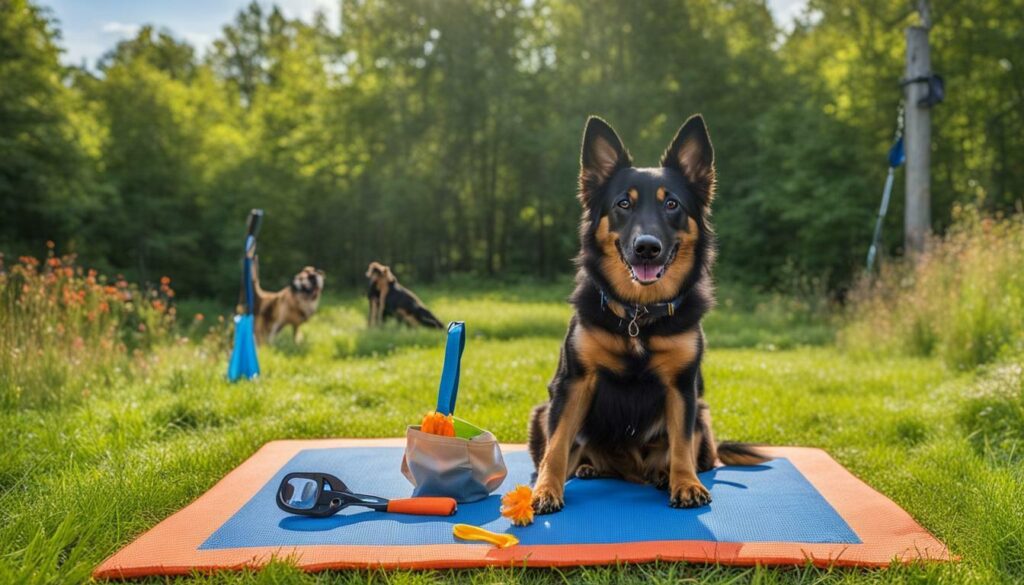
Training your dog for good behavior at home is essential for their overall well-being. By setting clear rules, establishing routines, and consistently reinforcing positive behavior, you can create a happy and harmonious living environment.
Firstly, it’s important to establish clear rules for your dog. Whether it’s setting boundaries in certain areas of the house or developing a routine for feeding and potty breaks, consistency is key. By establishing clear rules, your dog will know what is expected of them and will feel more relaxed and secure in their environment.
Consistency is also important when it comes to reinforcing positive behavior. Use positive reinforcement techniques such as praise, treats, and toys to reward good behavior and discourage bad behavior. It’s important to be patient and consistent with these techniques, as it may take time for your dog to learn and adjust.
In addition to positive reinforcement, it’s important to redirect negative behavior in a firm but gentle manner. For example, if your dog is chewing on furniture, redirect their attention to an appropriate chew toy and praise them when they chew on the toy instead.
Another key to good behavior at home is providing your dog with plenty of exercise and mental stimulation. This can include daily walks, puzzle toys, and training sessions. A tired and satisfied dog is less likely to engage in destructive behavior or develop bad habits.
Remember, training for good behavior at home is an ongoing process that requires patience and persistence. By setting clear rules, rewarding positive behavior, redirecting negative behavior, and providing plenty of exercise and mental stimulation, you can establish a happy and harmonious living environment for you and your furry friend.
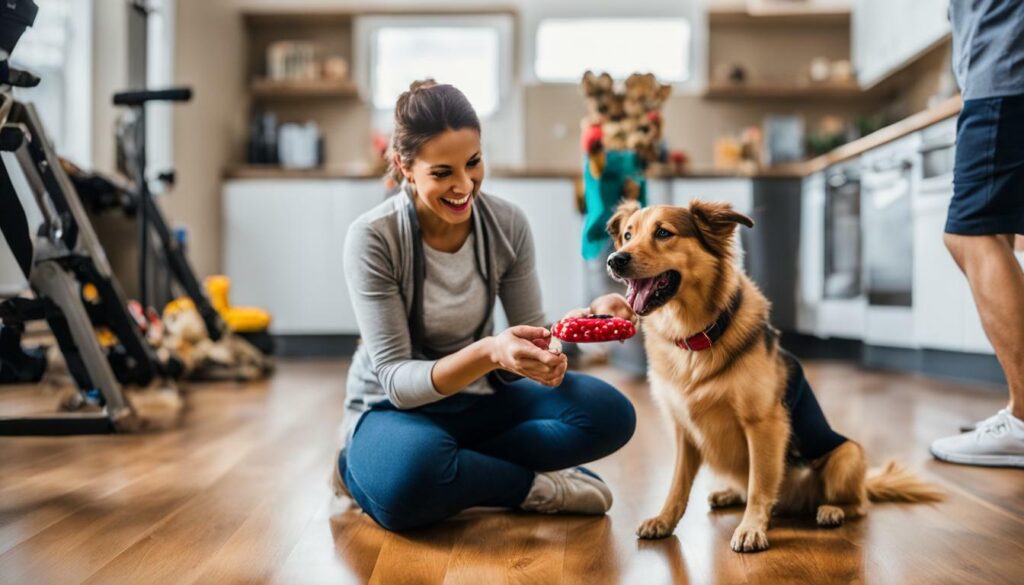
Training your dog to behave appropriately in public is essential for their safety and the well-being of others. While training for good behavior at home is crucial, it’s equally important to prepare your dog for various public settings. From busy streets to crowded parks, your dog should be well-mannered and confident to handle any situation.
One of the first steps in training for public etiquette and safety is to socialize your dog with other dogs and people. Dog training classes can be an excellent opportunity for your dog to interact with others while learning new skills. It’s also essential to expose them to different environments, sounds, and smells that they may encounter in public.
When it comes to obedience training, it’s crucial to reinforce commands such as “sit,” “stay,” and “come” to ensure that your dog responds appropriately in public settings. You can also train your dog to walk on a leash calmly and politely and refrain from jumping on people or other dogs.
In addition to basic obedience training, it’s important to teach your dog to stay calm and focused in distracting situations. For example, you can train them to ignore food left on the ground or to remain calm around other dogs barking or playing.
Remember to reward your dog for good behavior in public and remain patient and persistent in your training efforts. With time and practice, your dog can become a well-mannered and confident companion in any public setting.

Consistency is an essential component of successful dog training. Without consistency, training can be confusing and frustrating for both you and your dog. Establishing a consistent training routine will lay the foundation for your dog’s learning process and set them up for success.
To ensure consistency in your training, it’s important to establish clear goals and objectives for each session. This will help you keep track of your dog’s progress and adjust your training techniques as needed. It’s also important to use the same commands and gestures consistently, and to avoid confusing your dog by using multiple commands for the same behavior.
Consistency should also extend beyond training sessions to the everyday routine with your dog. Consistently enforcing rules and boundaries will reinforce good behavior and prevent undesirable behavior from developing.
Remember, consistency requires patience and perseverance. Dogs thrive on routine, so it’s important to stick to a consistent training schedule even when progress is slow. Consistency in training will pay off in the long run, resulting in a well-trained and obedient dog.
Tips for Consistent Training:
- Establish clear goals and objectives for each training session.
- Use the same commands and gestures consistently.
- Enforce rules and boundaries consistently in everyday routines.
- Set a consistent training schedule and stick to it.
- Be patient and persistent, even when progress is slow.
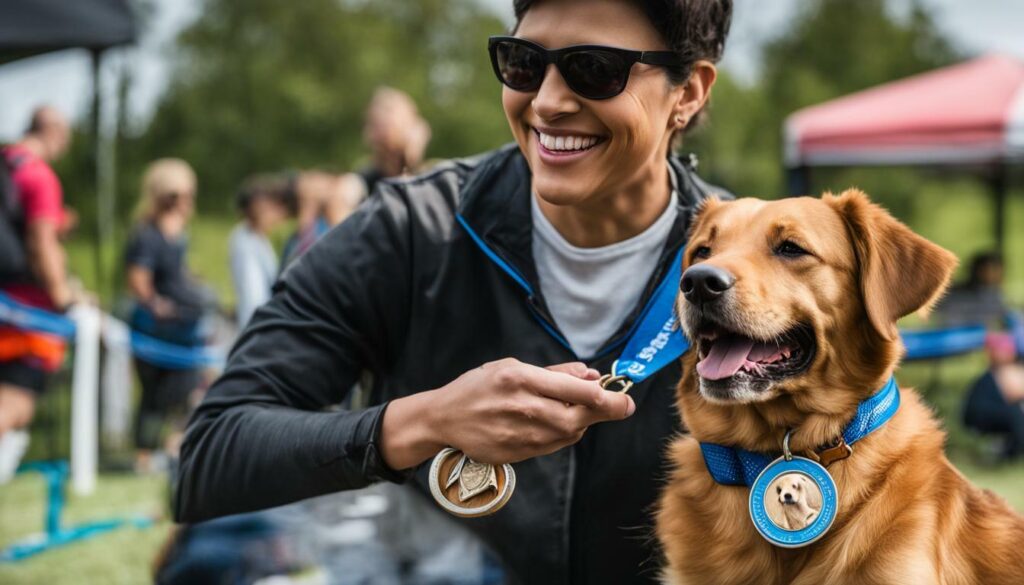
The Journey of Training: Patience and Persistence
Training a dog is a journey that requires patience and persistence. It’s essential to understand that training is not a one-time event, but rather a continuous process that requires consistency and dedication.
When embarking on your dog’s training journey, it’s important to set realistic expectations and understand that progress may not always be linear. There may be setbacks and challenges along the way, but it’s crucial to stay motivated and persistent.
One of the most important things to keep in mind during training is to remain patient. Dogs can sense frustration and stress, which can impede their learning and make training sessions less effective. Instead, approach training with a calm and positive attitude, focusing on reinforcing desired behaviors.
It’s also crucial to be consistent with your training methods. Dogs thrive on routine and repetition, and consistency in training will help reinforce desired behaviors and make learning more effective.
Remember to celebrate small successes along the way. Each time your dog exhibits a desired behavior, reward them with praise and treats. This positive reinforcement will help motivate your dog to continue learning and performing well.
Lastly, don’t be afraid to seek help from a professional trainer if needed. A trainer can provide expert guidance and support to help you overcome training challenges and accelerate your dog’s learning.
In conclusion, training a dog requires patience, persistence, and consistency. With the right attitude and techniques, you can create a strong bond with your dog while promoting good behavior and obedience.
FAQ
Never Too Late: Is It Too Late to Train My Dog? Find Out Now!
In this section, we will explore whether it is truly too late to train a dog and provide some dog training tips and techniques to help you get started with obedience training.
The Age Factor: Training an Older Dog
Age should not be a deterrent when it comes to training your dog. We will discuss why it’s possible to train an older dog and provide effective training techniques that are suitable for their age.
Dealing with Stubbornness: Training a Stubborn Dog
If you have a stubborn dog, don’t worry. We will share tips and strategies to overcome stubborn behavior and modify their behavior effectively through training.
The Importance of Consistency in Training
Consistency is key when it comes to training any dog. Discover why consistent training methods are essential and learn how to incorporate them into your daily routine.
Positive Reinforcement Training: A Rewarding Approach
Positive reinforcement is a powerful training method that rewards desired behaviors. Learn how to use positive reinforcement effectively and create a positive learning environment for your dog.
Clicker Training: Teaching Dogs with Precision
Clicker training is a popular technique that uses sound reinforcement to mark and reward desired behaviors. Discover how clicker training can improve communication between you and your dog.
Training Tools and Equipment for Success
Explore various training tools and equipment that can aid in your dog’s training journey. From leashes to treats, we will discuss their effectiveness and how to use them appropriately.
The Benefits of Professional Dog Training
Consider the advantages of enlisting the help of a professional dog trainer. Find out how their expertise and training programs can accelerate your dog’s learning and improve obedience.
Socialization and Dog Training Classes
Learn about the importance of socialization in dog training and how dog training classes can provide valuable opportunities for your dog to interact with others while learning new skills.
Addressing Specific Behavior Issues
Explore effective techniques for addressing common behavior issues such as excessive barking, jumping, and leash pulling. We will provide step-by-step instructions to help you tackle these challenges.
Overcoming Training Challenges
We understand that every dog is unique and may present different training challenges. Discover strategies to overcome these obstacles and ensure successful training sessions.
Training for Good Behavior at Home
Training your dog for good behavior at home is crucial for their overall well-being. We will provide tips and techniques to promote positive behavior and create a harmonious living environment.
Training for Public Etiquette and Safety
Training your dog to behave appropriately in public is essential for their safety and the well-being of others. Learn techniques to ensure your dog is well-mannered and confident in various public settings.
Troubleshooting Training Issues
Sometimes, you may encounter roadblocks during the training process. We will address common training issues and provide solutions to help you overcome these challenges.
The Journey of Training: Patience and Persistence
Training a dog is a journey that requires patience and persistence. We will offer encouragement and tips to stay motivated throughout the training process, leading to a strong bond and well-behaved dog.
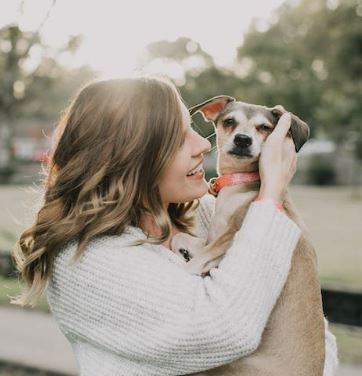
Marissa Delotta, 36, from Dayton, Ohio, is the creative force behind Roverboard.com, a beloved online destination for dog lovers. As a dedicated mom and canine enthusiast, Marissa combines her family experiences with her love for dogs to offer a platform where dog owners can exchange tips, heartwarming stories, and advice. Her website has become a vibrant community for sharing the joys of dog parenting. In her free time, Marissa enjoys exploring dog parks with her family and volunteering at local animal shelters.

